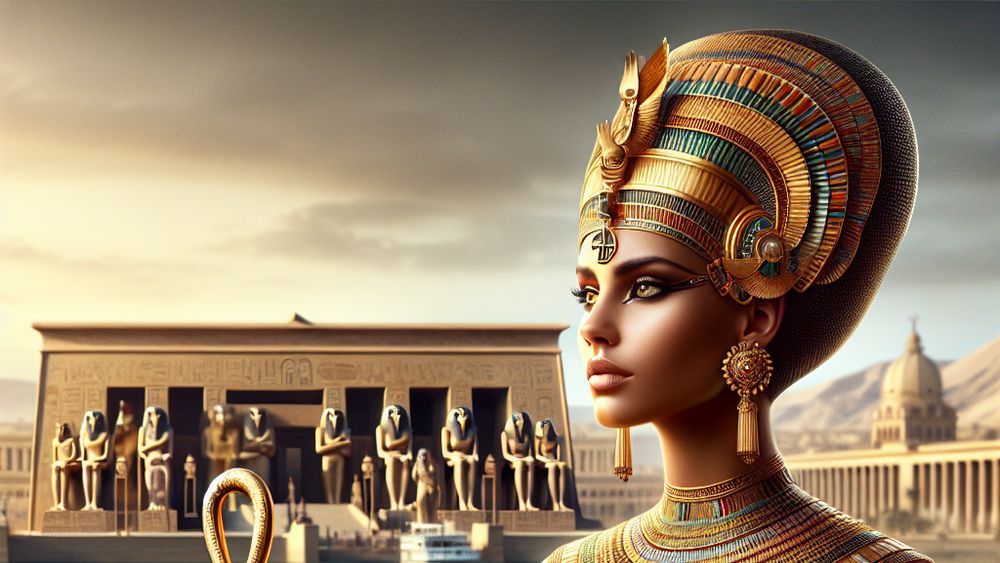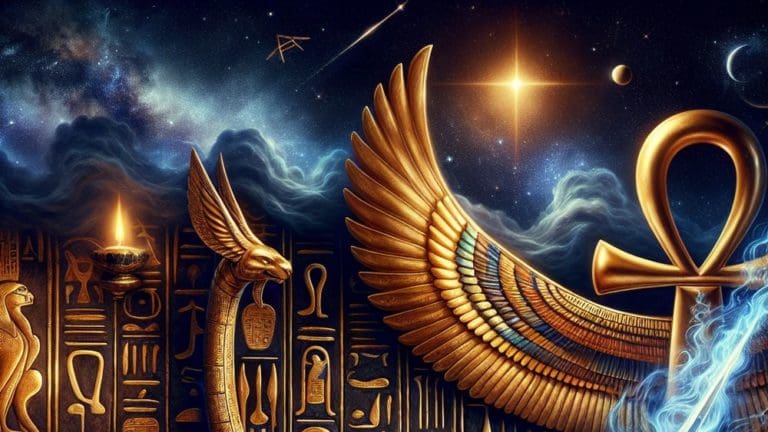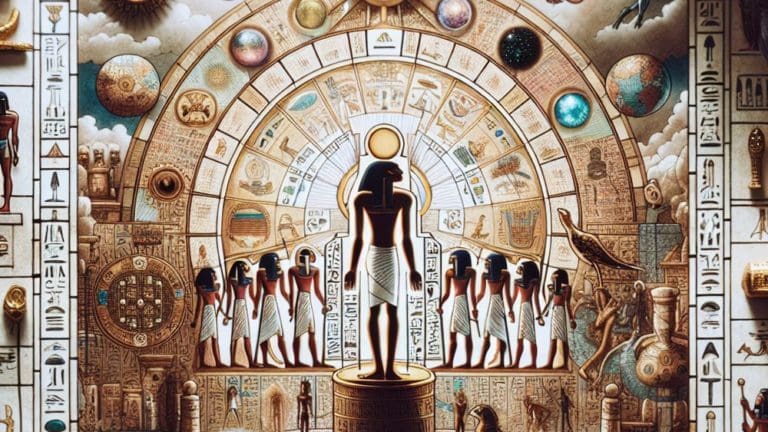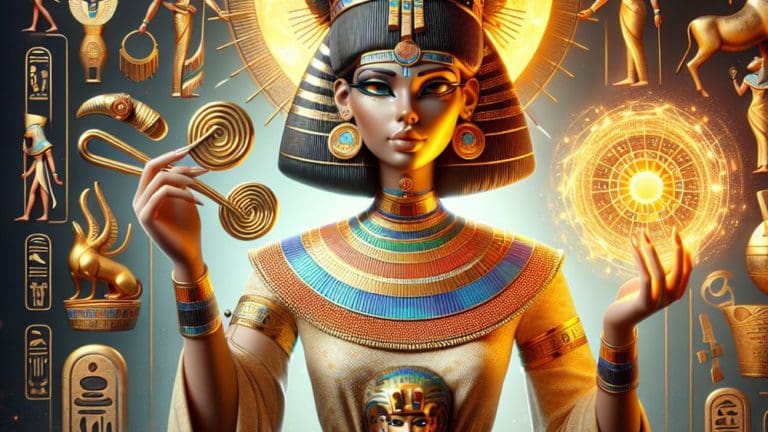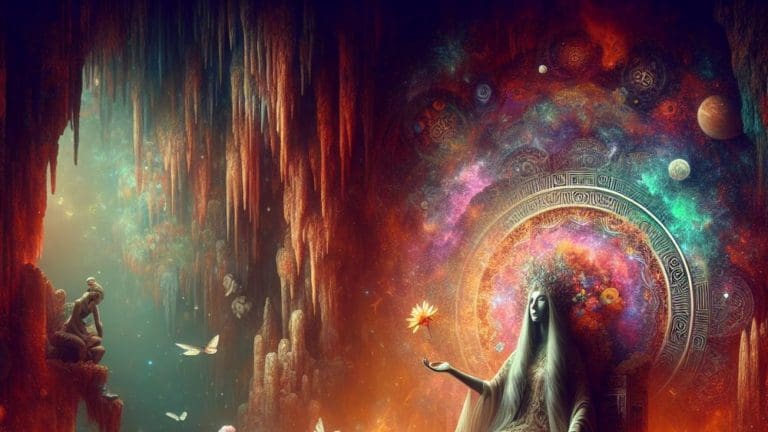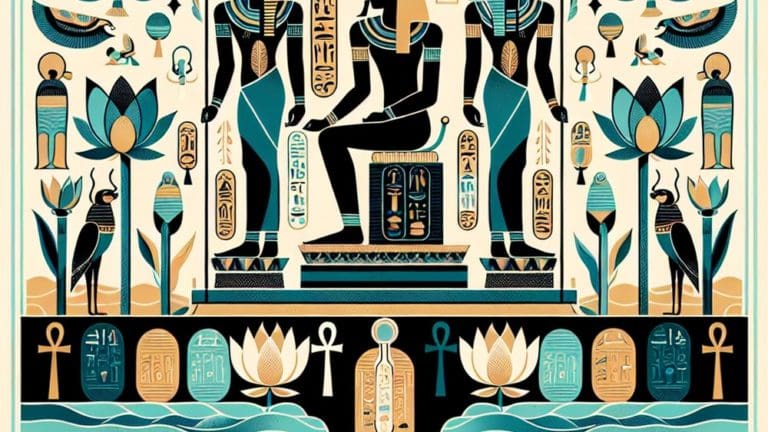Cleopatra The Goddess: Eternal Legacy And Power
Cleopatra The Goddess: Eternal Legacy And Power
Have you ever pondered about the life of one of history’s most enigmatic figures, whose very name evokes an era of intrigue, romance, and power? Cleopatra the goddess, not just a queen but a deity in her own right, has fascinated scholars, travelers, and history enthusiasts for centuries. Her allure lies not only in her political acumen but also in her divine representation, blurring the lines between mortal and goddess. Embracing her legacy opens a portal to an ancient world, where politics, religion, and mythology play out in the sands of Egypt. Her story invites us to uncover the mysteries that have captivated the imagination of the world. Through the pages of history and the remnants of Alexandria, we embark on a quest to understand Cleopatra’s true power and divine connection.
Key Points:
- Cleopatra’s reign intertwined political strategy with divine imagery, blurring the lines between mortal and goddess.
- She strategically associated herself with the goddess Isis to solidify her political power and divine status.
- Cleopatra’s ability to straddle politics and spirituality marked her as a unique and influential historical figure.
- Her reign was characterized by political alliances and romantic entanglements with powerful Roman figures.
- Cleopatra’s legacy straddles history and myth, leaving an indelible mark on both Eastern and Western worlds.
- The blending of Greek and Egyptian traditions under Cleopatra’s rule reflected her diplomatic skill and cultural fusion.
- Cleopatra was viewed by Rome as both a captivating enemy and a goddess, challenging traditional power dynamics.
What secrets lie in the ruins of her once-great city? How did this enigmatic figure manage to captivate the hearts of two of Rome’s most powerful men and maintain her throne in a tumultuous era? As we delve into Cleopatra’s world, we dance on the fine line between fact and fiction, between what was written by her enemies in Rome and what she signified to her people in Egypt. This journey isn’t just about unearthing the past; it’s about connecting with a history that is as alive today as it was over two millennia ago. Let’s unwrap the layers of Cleopatra’s eternal legacy, seeking not just facts, but understanding.
The Divine Aspects of Cleopatra’s Reign
Exploring the divine aspects of Cleopatra’s reign invites us into a fascinating synthesis of political strategy and spiritual embodiment. Her reign was not just a testament to her political savvy but also to her strategic application of divine imagery, cleverly positioning herself within the complex pantheon of Egyptian gods. This interweaving of the mortal and the divine was not accidental but a calculated part of her identity. Cleopatra’s clever manipulation of symbols and religious beliefs helped solidify her power and legacy, serving as a bridge between Egypt’s illustrious past and its uncertain future under Roman dominion.
Cleopatra: A Political and Spiritual Figure
Cleopatra’s ability to straddle the worlds of politics and spirituality with unparalleled grace marks her as one of history’s most fascinating figures. As the last active ruler of the Ptolemaic kingdom of Egypt, she wielded her authority with a blend of political acumen and divine representation, making her a formidable force in both arenas. She was not merely a queen; Cleopatra was a strategist and a scholar, fluent in multiple languages, and was deeply involved in the governance and improvement of her realm. The key to understanding her enduring legacy lies in recognizing her as both a political leader and a spiritual figure of worship, navigating the complexities of her time with intelligence and elegance.

Her reign was characterized by political alliances and romantic liaisons with powerful Roman figures like Julius Caesar and Mark Antony, which were both matters of the heart and strategic moves. These relationships were not just for personal power but also for the survival and prosperity of Egypt in a world dominated by empires. Cleopatra’s political maneuvering and her portrayal as a living goddess were instrumental in solidifying her power and legacy, marking her as a figure whose influence transcended the confines of her own realm and era.
Recognizing Cleopatra as both a political leader and a spiritual figure is essential to understanding her enduring legacy and influence across history.
The Cult of Isis and Cleopatra’s Deification
The fascinating aspect of Cleopatra’s deification lies in her association with Isis, the ancient Egyptian goddess of magic, fertility, and motherhood. This alignment was far from coincidental; it was a calculated move to strengthen her position both politically and spiritually. By portraying herself as the reincarnation of Isis, Cleopatra not only solidified her divine status among her subjects but also strategically positioned herself in the broader pantheon of deities. This ties deeply into Egyptian culture, where the pharaohs were seen as gods in their own right. Such was the power of her deification that it transcended Egyptian borders, reaching as far as Rome, where her image as both queen and deity provoked fascination and fear.
Symbols of Power: Cleopatra’s Divine Iconography
Cleopatra’s divine iconography is a testament to her astute understanding of the power of imagery and symbolism in asserting divine authority. Her representation in art and coins borrowed heavily from the symbolism associated with the goddess Isis, further reinforcing her deified status. Among her most prominent symbols were:
- The throne: Representing her status as a ruler
- The lotus flower: Symbolizing rebirth and the sun, which ties back to her role as a deity
- The double crown of Egypt: Denoting her dominion over upper and lower Egypt
- The solar disc and cow’s horns: Directly associated with Hathor, but often used in depictions of Isis and, subsequently, Cleopatra
- The cobra (uraeus): Signifying royal authority and protection
These symbols were not just decorative; they were deliberate choices, laden with historical and cultural significance, designed to communicate her dual role as queen and living goddess. They were her silent emissaries, projecting her power, divinity, and authority across her kingdom and beyond.
Cleopatra strategically used symbols like the throne, lotus flower, double crown of Egypt, solar disc, cow’s horns, and cobra to assert her authority and divine status, leveraging the power of imagery and symbolism.
Cleopatra’s Legacy in History and Myth
Cleopatra’s legacy straddles the realms of history and myth, a testament to her unrivaled influence and the fascination she continues to inspire. Her life was a tapestry of political genius, romantic entanglements, and cultural syncretism, leaving an indelible mark on the narratives of both the Eastern and Western worlds. As we delve into the complexities of her reign and its repercussions, it paves the way for a greater understanding of the impact she had on the shaping of history and the perpetual allure of her story in modern culture.
The Blending of Greek and Egyptian Traditions
The blending of Greek and Egyptian traditions under Cleopatra’s reign was a bold and strategic maneuver, reflecting her sophisticated understanding of her kingdom’s diverse cultural landscape. Born into the Ptolemaic dynasty, a Greek royal family ruling Egypt, Cleopatra embraced and merged the rich traditions of both cultures, creating a unique fusion that resonated with all her subjects. This was a balancing act of remarkable diplomatic skill, as she managed to maintain the loyalty of the Egyptian population while also appealing to the Greek elites and even the broader Roman world.
Her education and fluency in multiple languages, including Egyptian – a rarity among the Ptolemies – allowed her to communicate directly with her people, solidifying her position as a ruler who transcended the cultural and linguistic barriers that had previously separated the Greek ruling class from their Egyptian subjects. This cultural amalgamation not only strengthened her hold on the throne but also enriched the fabric of Egyptian society, making her reign a fascinating epoch in the annals of history.
Cleopatra in the Eyes of Rome: Enemy and Goddess
In the intricate tapestry of ancient rivalries, Cleopatra’s place within the Roman world was complex and contradicting. Rome viewed her simultaneously as a captivating enemy and a deity incarnate, creating a dichotomy that has fascinated scholars for centuries.
Her alliance with Julius Caesar and later, Mark Antony, positioned her as a formidable opponent against Roman expansion, yet her purported divine lineage and persona captivated the Roman people’s imagination. Rome’s elite, wary of her power and influence, painted Cleopatra in historical texts as a cunning seductress, threatening the moral and social fabric of Rome.
Yet, despite these efforts to vilify her, Cleopatra’s divine queen image permeated through Roman society. She was often likened to Venus, the Roman goddess of love, highlighting a begrudging respect and acknowledgment of her divinity and intellect. The enemy that Rome faced was not just a queen but a goddess, challenging the very definition of power and influence in the ancient world.
The Eternal Fascination: Cleopatra in Modern Culture
Cleopatra’s enduring legacy continues to captivate the world’s imagination, bridging the past with the present in a myriad of ways. Her story has been retold through hundreds of years, manifesting in literature, films, and even fashion, each iteration exploring her complex identity and the power she wielded as both a queen and a deity.
- Movies like “Cleopatra” (1963) tread the fine line between historical authenticity and cinematic drama, painting her as a figure of unmatched beauty and political savvy.
- Literature explores her life from various angles, from historical biographies that aim to uncover the truth behind the myth, to fictional accounts that play with the what-ifs of her reign.
- Fashion designers have long drawn inspiration from Cleopatra, emulating her iconic style in collections that celebrate strength, femininity, and royalty.
This myriad of portrayals speaks volumes to her impact on modern culture, illustrating a timeless fascination with her life and legacy.

Cleopatra’s story continues to inspire modern culture through various mediums like movies, literature, and fashion, showcasing her enduring influence and captivating legacy.
The Influence of Cleopatra’s Goddess Persona
Cleopatra’s adept use of divine imagery not only solidified her dominion over Egypt but also extended her influence far beyond its borders. By meshing the lines between mortality and divinity, she accrued unparalleled power and reverence.
Cleopatra’s Strategic Use of Divine Imagery
Cleopatra masterfully leveraged symbols of divinity in her iconography, cultivating an image of a living deity. This strategic imagery was not just for show; it reinforced her political messages and strengthened her position both within Egypt and abroad.
One of the most potent representations was her likeness to Isis, Egypt’s revered goddess, embodying ideals of motherhood, protection, and rulership. This association elevated Cleopatra in the eyes of her subjects, blending the lines between ruler and divine protector.
The Role of Religion in Cleopatra’s Rule
Religion was a cornerstone in the administration of ancient Egypt, permeating every aspect of daily life and governance. Cleopatra understood this intimately and wove her divine queen persona tightly into the fabric of Egyptian spirituality.
Her close association with Isis not only solidified her status among her subjects but also acted as a powerful diplomatic tool. Through religious ceremonies and public appearances as Isis incarnate, she bolstered her image as a guardian of Egyptian tradition and stability in times of turmoil.
Understanding and integrating the cultural and religious beliefs of a community can significantly enhance one’s leadership and influence.
Cleopatra’s Impact on Ptolemaic Dynasty’s Religious Practices
Cleopatra’s reign marked a significant turning point in the religious practices of the Ptolemaic dynasty. Her strategic deification and the blending of Greek and Egyptian religious traditions reflected her innovative approach to rule.
| Aspect | Before Cleopatra | During Cleopatra’s Reign |
|---|---|---|
| Deification of Rulers | Limited and ceremonial | Integrated and strategic |
| Greek-Egyptian Syncretism | Gradual and superficial | Deep and pervasive |
| Religious Diplomacy | Incipient | Extensively used |
This table highlights the transformative effect Cleopatra had on the intertwining of politics and religion within the Ptolemaic state. Her reign was not just a period of political upheaval but also a renaissance of religious and cultural fusion, underscoring her legacy as a deity and a ruler.
FAQs
1. How did Cleopatra come to be seen as a goddess?
Cleopatra was seen as a goddess partly because she styled herself as the reincarnation of Isis, the Egyptian goddess of magic, fertility, and motherhood. By associating herself with Isis, Cleopatra underscored her role not just as a political leader but as a divine protector of Egypt and its people.
2. What symbols were associated with Cleopatra’s divine status?
Symbols associated with Cleopatra’s divine status included the crown of Isis, which featured a pair of cow horns enclosing a solar disk. This iconography linked her directly to the goddess’s power and protection, reinforcing her divinity in the public eye.
3. In what ways did Cleopatra’s divinity influence her political power?
Cleopatra’s divinity significantly bolstered her political power by legitimizing her rule in the eyes of her subjects and aligning her with the revered traditions of Egypt’s gods. Her portrayal as a deity also helped forge a direct connection with her people, enhancing loyalty and support.
4. How has Cleopatra’s portrayal as a goddess changed over time?
Over the centuries, Cleopatra’s portrayal as a goddess has shifted from a literal to a more metaphorical understanding. While ancient texts emphasized her as a deity, modern interpretations often focus on her strategic brilliance and charismatic leadership, acknowledging her divine status as part of her political maneuvering.
Conclusion
As we delve into the history and mythology surrounding Cleopatra the goddess, it becomes clear that her legacy is as multifaceted as it is everlasting. Her adept use of religious and cultural imagery not only secured her reign but also ensured that her story would captivate the imagination of generations to come. As we uncover more about this remarkable queen, we are reminded of the power of history to inspire wonder, admiration, and, most importantly, a deep respect for the cultures that shape our world. Thank you for joining me on this journey into the past, where mysteries await and legends come to life. Until our next adventure, farewell and keep exploring.
Signing off,
Cedric

